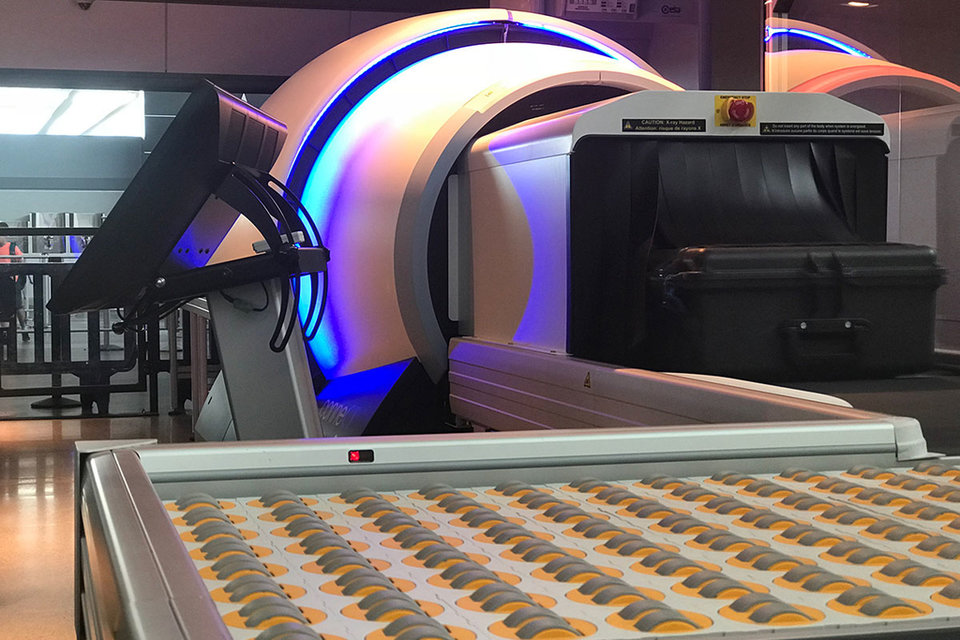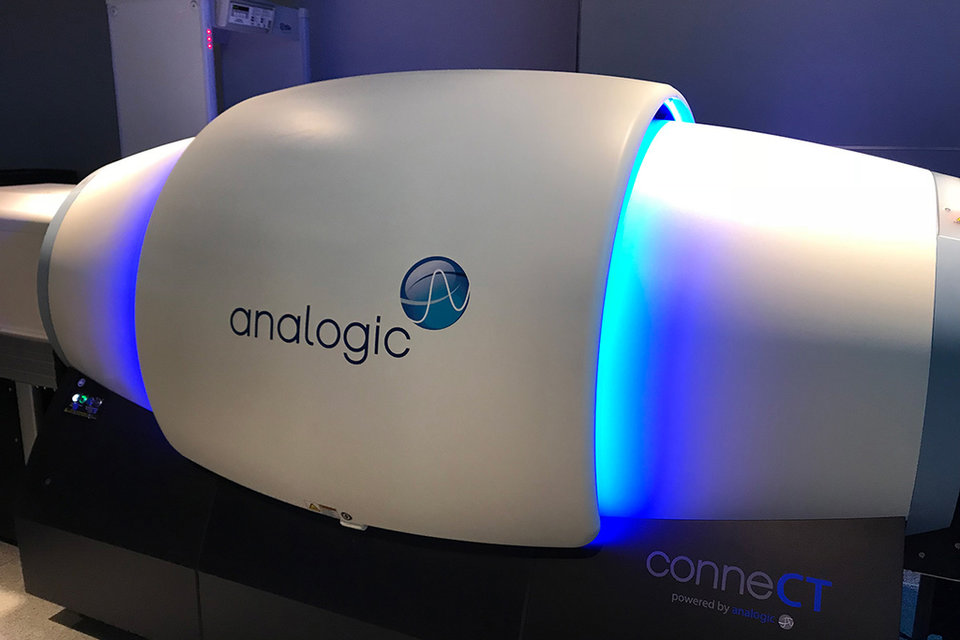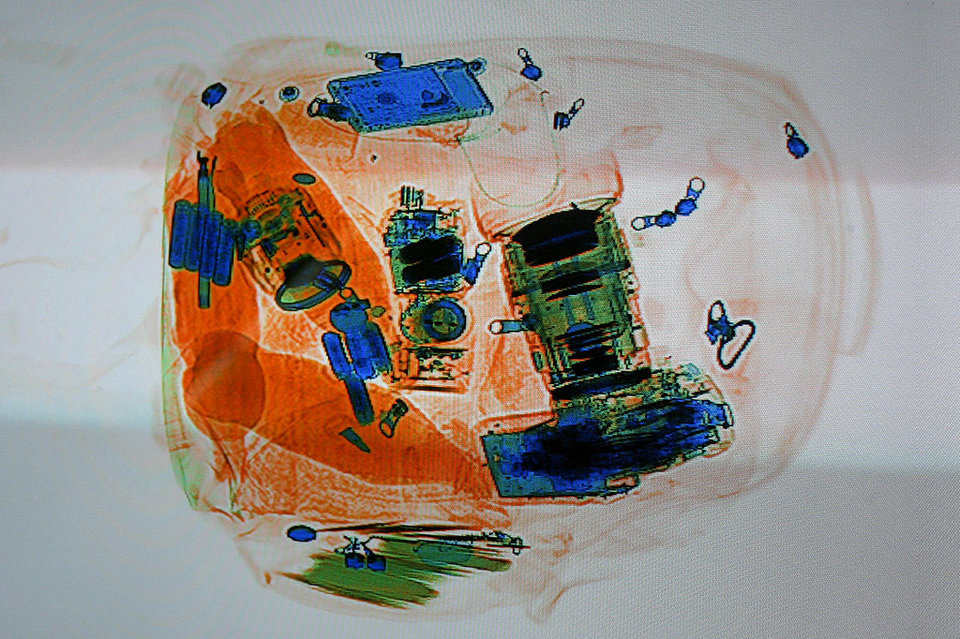Security
Liberating liquids: CT tech drives airport security investment
The
future
of US air
traffic control:
the third option?
CT scanners have been used at airports to screen checked baggage for years, but new improvements are seeing these advanced systems introduced to airport security checkpoints. Chris Lo asks: how is the sector’s investment in CT technology progressing, and what benefits is it bringing to security lines?
It’s been 13 years since UK police uncovered a terrorist plot to attack transatlantic flights using peroxide-based liquid explosives. The foiled plan, which led to 24 arrests and nine convictions in the UK on conspiracy charges, created further restrictions for passengers moving through airport security.
In the immediate aftermath of the bomb plot these restrictions were particularly severe, especially in the UK, where all non-essential cabin luggage was prohibited and even approved items could only be taken through security in clear plastic bags. Infant formula was permitted, with the proviso that the accompanying passenger would have to taste the liquid in front of staff.
In 2019, security restrictions for carry-on luggage have eased significantly since the turbulent response to the 2006 liquid explosives plot. But one major legacy has endured at most international airports around the world – the requirement that liquids be kept in 100ml bottles and transferred from baggage into clear plastic bags before being scanned through security. In most cases, electronic kit such as laptops must also be removed from bags and scanned separately.
Today, there are adult passengers young enough to not remember a time when these restrictions didn’t apply, and getting through airport security was comparatively hassle-free. Intense caution over potential airport security risks is clearly understandable, and has been effective at reducing the threat of major attacks at airports and on planes, but it has led to compromise for passengers and knock-on effects for airport operators, with security throughput falling as a result of the multi-stage checks.
Image courtesy of
CT tech: ready for the security line
However, this compromise might not be necessary for much longer, as technology steps in to fill the security void while minimising manual checks. Computed tomography (CT) scans use computer processing to combine hundreds of individual X-ray measurements from different angles to create a 3D image, so that the object being scanned can be rotated and examined internally.
Medical imaging is the predominant application of CT technology, but it’s not new to airports – CT scans are commonly used to inspect checked luggage bound for plane holds, but the size and expense of CT systems has previously prevented the technology from crossing over to space-constrained passenger security checkpoints.

CT unit at JFK Airport. Image courtesy of American Airlines
But now, manufacturers such as Analogic Corporation and Smiths Detection have started to miniaturise CT scanners to checkpoint-friendly sizes, and major trials and deployments are now ongoing around the world to introduce the new technology to security lines. The more sophisticated 3D images generated, when combined with detection algorithms for explosives and other contraband, could represent a step-change in airport security when compared to traditional X-ray screening systems, which have remained broadly similar in operation since the 1970s.
“The CT technology applies sophisticated algorithms for the detection of explosives and other threats by creating a 3-D image that can be viewed and rotated 360 degrees for a thorough analysis,” reads a US Transportation Security Administration (TSA) advisory on the technology. “The machines create such a clear picture of a bag’s contents that computers can automatically detect explosives, including liquids.”
Eero Knuutila is Head of Service Development at Helsinki Airport.
Image courtesy: Helsinki Airport
CT technology applies sophisticated algorithms for the detection of explosives and other threats
Global CT trials aim to liberate liquids and laptops
In the last several years, increasing numbers of airports and aviation authorities have been trialling CT technology to confirm the benefits and set the stage for a wider rollout. The TSA is one of the global leaders, starting trials back in 2017 and reportedly investing $96.8m to order 300 new CT scanner. The administration aims to have the 300 units deployed at airports around the country by 2020, and CT scanners are already in use at more than 20 airports. These include major hubs such as Chicago O’Hare, New York JFK, LAX and Hartsfield-Jackson.

Image courtesy of IDuke
At airports where CT units are installed, the TSA is already allowing passengers to keep their laptops in their carry-on bags, and the agency has said it hopes to allow small quantities of liquids to remain in bags as well.
In the UK, London Heathrow Airport recently announced that it is spending £50m on CT technology, having also been trialling it since 2017. The airport is planning to have CT scanners installed across its terminals by 2022.
“This cutting-edge kit will not only keep the airport safe with the latest technology, but will mean that our future passengers can keep their focus on getting on with their journeys and less time preparing for security screening,” said Heathrow chief operations officer Chris Garton in June.
This cutting-edge kit will mean that our future passengers can keep their focus on getting on with their journeys
Rolling out CT tech: benefits and obstacles
The prospect of once more being able to move through security without the faff of separating liquids and electronics from their bags is an exciting one for passengers, and there are important operational benefits for airports as well. More precise baggage screening provides a clear security benefit, but could also increase throughput by requiring fewer additional manual bag checks.

Image courtesy of American Airlines
Less preparation by passengers and the removal of separate trays should also speed the process along, while Smiths Detection has noted that its CT system supports the fastest conveyor belt speed (0.2m/s). In all, the manufacturer has claimed that the use of CT should allow airports to return to “pre-9/11” throughput rates of around 300 passengers per hour, as opposed to approximately 180 per hour today.
There are still technical kinks to work out with the systems, such as refining their machine learning algorithms to minimise false alerts for incorrectly identified items. Economically, widespread CT adoption will be no easy feat either – at a cost of around $300,000 per unit, CT scanners cost around double the price of traditional X-ray screening systems. In the US, the TSA is positioned to play an important role in facilitating (and partially funding) the technology’s wider US rollout, while Heathrow Airport noted in June that it is collaborating with the UK Department for Transport to “help other airports up and down the country as they look to begin trials of their own in the coming months”.
Eero Knuutila is Head of Service Development at Helsinki Airport.
Image courtesy: Helsinki Airport
Less preparation by passengers and the removal of separate trays should also speed the process along